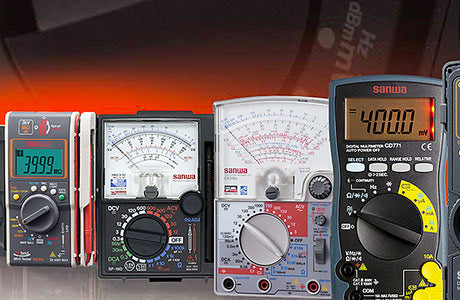Key Takeaway
DMM stands for Digital Multimeter. It is an electronic device used to measure various electrical parameters like voltage, current, resistance, and continuity.
DMMs provide digital readings, offering better accuracy and ease of use compared to analog meters.
DMM Explained -Digital Multimeter Defined
A Digital Multimeter (DMM) is a versatile electronic tool used to measure voltage, current, and resistance with high accuracy. Unlike analog multimeters, DMMs display readings on a digital screen, making them easy to interpret.
The main advantage of a DMM is its precision, reliability, and user-friendly features, such as automatic range selection and data hold functions. Modern DMMs often include additional capabilities like frequency measurement, temperature testing, and capacitance measurement. These features make them indispensable in troubleshooting, maintenance, and circuit design.
For example, in electronics repair, a DMM helps identify defective components, such as faulty resistors or capacitors, by providing precise measurements. Its digital display eliminates reading errors common in analog devices. With proper knowledge of its functions, a DMM becomes a valuable tool for both beginners and professionals.

Features of Digital Multimeters Over Analog Models
Digital multimeters (DMMs) have distinct advantages over analog multimeters, particularly in terms of ease of use, accuracy, and advanced features. Here are some key features that set digital models apart from their analog counterparts:
1. Digital Display: One of the most significant benefits of DMMs is their digital display, which shows a clear numerical value, making it easier to read measurements compared to the needle and scale of analog meters.
2. Accuracy and Precision: Digital multimeters provide higher accuracy and more precise measurements, with many offering readings to several decimal places. This is essential in applications where exact voltage or current measurements are critical.
3. Auto-Ranging: Many digital multimeters have auto-ranging capabilities, which automatically adjust the measurement range depending on the value being measured. This feature saves time and ensures accuracy, especially for users who may not be familiar with selecting the correct range manually.
4. Advanced Functions: Digital models often include advanced functions such as temperature measurement, frequency measurement, capacitance testing, and even data logging. These features make DMMs more versatile and useful in a wide range of applications.
5. Safety: Digital multimeters generally have better safety features, including overload protection and fused protection for high current measurements, reducing the risk of damaging the multimeter or the user.
Applications of Digital Multimeters Across Fields
Digital Multimeters are incredibly versatile and find applications across various industries and fields. Their ability to measure multiple parameters makes them invaluable for professionals and hobbyists alike.
Electronics:
Testing resistors, capacitors, and diodes in electronic circuits.
Measuring voltage and current in microcontroller-based systems.
Electrical Systems:
Diagnosing faults in wiring and outlets.
Verifying voltage levels in residential and industrial power systems.
Automotive Industry:
Checking battery health and alternator performance.
Troubleshooting electrical components in vehicles.
Renewable Energy:
Monitoring output from solar panels.
Ensuring consistent voltage in wind turbine systems.
Education and Research:
Used in laboratories for experiments and prototyping.
Essential for teaching the fundamentals of electronics.
Key Advantages of Using a DMM in Circuit Testing
Digital Multimeters (DMMs) are a vital tool for any electrical technician or engineer, offering numerous advantages in circuit testing. One of the main benefits of using a DMM is its accuracy. Unlike analog meters, which require the user to read a moving needle, DMMs provide a precise digital display of the measured value. This makes them easier to read and less prone to user error, especially when dealing with small changes in voltage, current, or resistance. DMMs also offer superior resolution, which is crucial when measuring tiny variations in voltage or current.
Another advantage is the versatility of digital multimeters. A single DMM can measure several parameters, such as DC and AC voltage, current, resistance, capacitance, and even frequency. This eliminates the need for multiple testing devices and simplifies the troubleshooting process. DMMs often come with auto-ranging features that automatically adjust the measurement range for optimal accuracy, making them especially useful in situations where you’re dealing with unknown values or unstable signals.
In addition to their accuracy and versatility, DMMs are designed with user safety in mind. Many DMMs include built-in features like overload protection, which helps prevent damage to the meter and the circuit being tested. Some also come with additional safety features, such as fused inputs or voltage detectors, to minimize the risk of electrical shock. For users working with high-voltage systems, the extra protection and the ability to handle higher voltage readings without risk of damage makes DMMs a safer choice compared to analog models.
Finally, digital multimeters are generally more durable and easy to use than their analog counterparts. With a variety of features tailored to both beginners and professionals, a DMM offers a user-friendly experience, making it an essential tool for efficient circuit testing, troubleshooting, and repair.
Common Misconceptions About DMM Terminology
Digital Multimeters (DMMs) are essential tools in electrical testing, but many users have misconceptions about the terminology associated with them. One of the most common misconceptions is regarding the term “digit” in multimeter specifications. For instance, a “3-digit” multimeter does not mean it can only measure values up to 999; it actually refers to the number of digits that can be displayed on the screen.
Another misconception is that the term “auto-ranging” means the multimeter automatically selects the correct unit of measurement (volts, ohms, amperes), but in reality, it only adjusts the range for the measurement type. The user must still select the correct unit to avoid confusion. Understanding these terms ensures that users get the most out of their multimeter and avoid unnecessary errors or frustration.
Conclusion
DMM stands for Digital Multimeter, a device used for measuring voltage, current, resistance, and other electrical parameters.
DMMs are highly accurate and versatile, making them the preferred choice for professionals and hobbyists in various fields.
